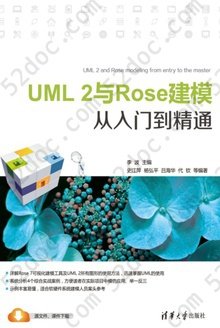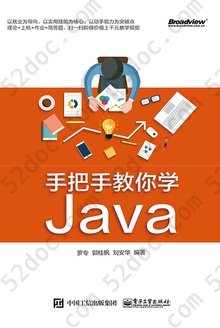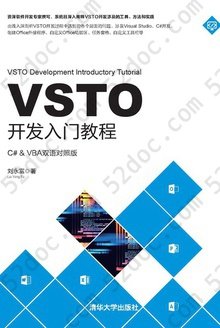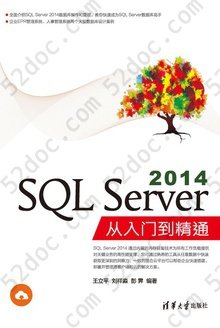注重体验与质量的电子书资源下载网站
分类于: 计算机基础 互联网
简介
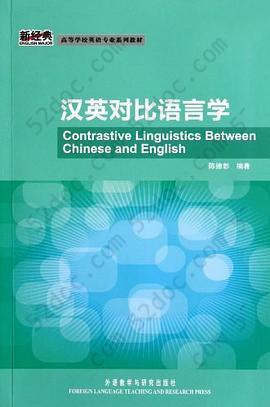
汉英对比语言学 豆 8.0分
资源最后更新于 2020-08-21 15:03:11
作者:陈德彰
出版社:外语教学与研究出版社
出版日期:2011-01
ISBN:9787513512916
文件格式: pdf
标签: 英语学习 语言 陈德彰 英语 语言学 翻译 非虚幻类 中国文学
简介· · · · · ·
陈德彰编著的《汉英对比语言学》选取对翻译实践造成困难的汉英语言差异为主题,对汉英两种语言进行了详细的对比分析,内容涉及词汇、语义、句法和语用等领域,既可作为英语专业高年级及研究生阶段语言学、翻译方向教材,亦可供翻译自学者参考。《汉英对比语言学》具有以下主要特点:
视角新颖,突显作者多年研究的独特见解;强调实用性,通过大量例证说明两种语言的差异,使学习者在两种语言之间进行转换时更加自如;兼顾理论性,分析造成两种语言差异的原因,加深学习者的理解;选取大量最新语言表达方式,说明两种语言的特点和最新发展,新颖有趣;练习设置形式多样,趣味性强,鼓励学习者积极观察和思考。
目录
Chapter 1 Language and Thinking
1.1 Introduction
1.1.1 Definition of language
1.1.2 Characteristics of language
1.2 Comparison of English and Chinese
1.2.1 Reason for contrastive studies between English and Chinese
1.2.2 Apreliminary comparison
Chapter 2 Words and Characters
2.1 English letters and Chinese characters
2.2 Development of Chinese characters
2.3 The relation between Chinese characters and words
2.4 Motivation of words
2.5 Meaning of words
2.6 Word as a unit
Chapter 3 Primal Words and Secondary Words
3.1 Introduction
3.2 Formation of secondary words
3.2.1 Combining
3.2.2 Examples of a special type of derivation
3.2.3 Compounding
3.3 Shortening
3.3.1 Acronym
3.3.2 Blending
3.3.3 Clipping
3.3.4 Shortening of Chinese words
3.4 Other means of new word formation
3.4.1 Conversion
3.4.2 Borrowing
3.5 Analogy
Chapter 4 Intonation and Tone
4.1 Intonation
4.2 Syllable
4.3 Sound effect of poems
Chapter 5 Conception and Nomenclature
5.1 Lexical disparity
5.2 Lexeme gap
5.2.1 Different motivations behind nomenclature
5.2.2 Different ways of grouping things
5.2.3 Differences among synonyms
5.2.4 Things unique to a culture
5.3 Semantic gap
5.3.1 Different reference meanings
5.3.2 Different extended meanings
5.3.3 Different directions of meanings
5.4 Usage Gaps
5.4.1 Transitivity
5.4.2 Differences caused by word formation
5.4.3 Differences caused by flexible usage--conversion
5.4.4 Differences caused by different grammatical meaningsbetween corresponding words
Chapter 6 Abstraction and Concretion
6.1 Abstraction and abstract meaning
6.2 杯 as an example
6.3 Further abstraction
6.4 Abstraction and sentence structure
6.5 Concretization of abstract nouns
Chapter 7 Stativeness and Dynamicity
7.1 Introduction
7.2 The verb
7.2.1 Functions of verbs
7.2.2 Classification of verbs
7.2.3 Morphological changes of English verbs
7.2.4 The use of verbs in the sentences
7.3 Verbalization of nouns
7.4 Action or motion implied in other parts of speech
7.4.1 The noun
7.4.2 Other parts of speech
7.5 At the syntactic level
Chapter 8 Overtness and Covertness
8.1 Markers
8.2 Parts of speech and their function in the sentence
8.3 The article
8.4 Marker of the plural
8.5 Chinese auxiliaries 的, 地, and 得
8.5.1 的
8.5.2 地
8.5.3 得
8.6 The passive
8.7 Punctuation marks
Chapter 9 Rigidity and Flexibility
9.1 General difference between Chinese and English grammar
9.2 Definition of the sentence
9.3 Classification of sentences
9.3.1 Some special Chinese sentence patterns
9.4 Elements of the sentence
9.4.1 The subject
9.4.2 Relation between the verb and its object
9.5 Word order
9.5.1 Adverbials
9.5.2 Relative clauses
9.5.3 Inversion
9.6 Parataxis and hypotaxis
9.6.1 Connectives
Chapter 10 Objectivity and Subjectivity
10.1 Language and subject
10.2 Daily usage of the language
10.3 Subjective and objective standards
10.4 Depiction of mental activities in English
10.5 The passive voice
10.6 Animated and inanimate subjects
10.7 Different levels of objectivity
Bibliography
Recommended Readings
1.1 Introduction
1.1.1 Definition of language
1.1.2 Characteristics of language
1.2 Comparison of English and Chinese
1.2.1 Reason for contrastive studies between English and Chinese
1.2.2 Apreliminary comparison
Chapter 2 Words and Characters
2.1 English letters and Chinese characters
2.2 Development of Chinese characters
2.3 The relation between Chinese characters and words
2.4 Motivation of words
2.5 Meaning of words
2.6 Word as a unit
Chapter 3 Primal Words and Secondary Words
3.1 Introduction
3.2 Formation of secondary words
3.2.1 Combining
3.2.2 Examples of a special type of derivation
3.2.3 Compounding
3.3 Shortening
3.3.1 Acronym
3.3.2 Blending
3.3.3 Clipping
3.3.4 Shortening of Chinese words
3.4 Other means of new word formation
3.4.1 Conversion
3.4.2 Borrowing
3.5 Analogy
Chapter 4 Intonation and Tone
4.1 Intonation
4.2 Syllable
4.3 Sound effect of poems
Chapter 5 Conception and Nomenclature
5.1 Lexical disparity
5.2 Lexeme gap
5.2.1 Different motivations behind nomenclature
5.2.2 Different ways of grouping things
5.2.3 Differences among synonyms
5.2.4 Things unique to a culture
5.3 Semantic gap
5.3.1 Different reference meanings
5.3.2 Different extended meanings
5.3.3 Different directions of meanings
5.4 Usage Gaps
5.4.1 Transitivity
5.4.2 Differences caused by word formation
5.4.3 Differences caused by flexible usage--conversion
5.4.4 Differences caused by different grammatical meaningsbetween corresponding words
Chapter 6 Abstraction and Concretion
6.1 Abstraction and abstract meaning
6.2 杯 as an example
6.3 Further abstraction
6.4 Abstraction and sentence structure
6.5 Concretization of abstract nouns
Chapter 7 Stativeness and Dynamicity
7.1 Introduction
7.2 The verb
7.2.1 Functions of verbs
7.2.2 Classification of verbs
7.2.3 Morphological changes of English verbs
7.2.4 The use of verbs in the sentences
7.3 Verbalization of nouns
7.4 Action or motion implied in other parts of speech
7.4.1 The noun
7.4.2 Other parts of speech
7.5 At the syntactic level
Chapter 8 Overtness and Covertness
8.1 Markers
8.2 Parts of speech and their function in the sentence
8.3 The article
8.4 Marker of the plural
8.5 Chinese auxiliaries 的, 地, and 得
8.5.1 的
8.5.2 地
8.5.3 得
8.6 The passive
8.7 Punctuation marks
Chapter 9 Rigidity and Flexibility
9.1 General difference between Chinese and English grammar
9.2 Definition of the sentence
9.3 Classification of sentences
9.3.1 Some special Chinese sentence patterns
9.4 Elements of the sentence
9.4.1 The subject
9.4.2 Relation between the verb and its object
9.5 Word order
9.5.1 Adverbials
9.5.2 Relative clauses
9.5.3 Inversion
9.6 Parataxis and hypotaxis
9.6.1 Connectives
Chapter 10 Objectivity and Subjectivity
10.1 Language and subject
10.2 Daily usage of the language
10.3 Subjective and objective standards
10.4 Depiction of mental activities in English
10.5 The passive voice
10.6 Animated and inanimate subjects
10.7 Different levels of objectivity
Bibliography
Recommended Readings



